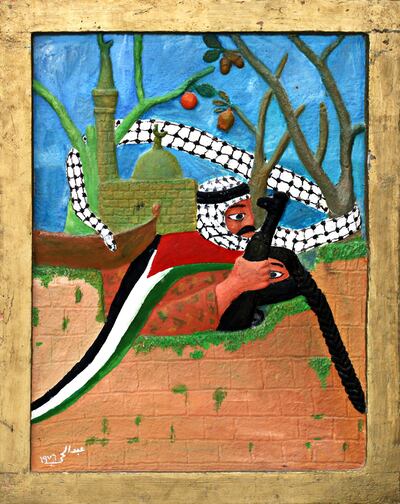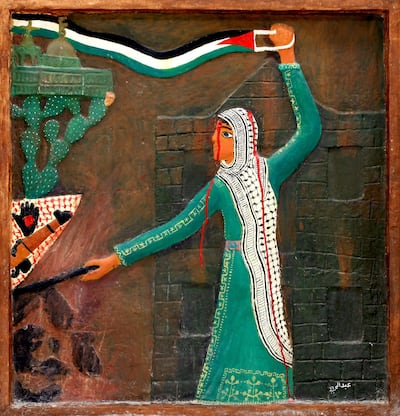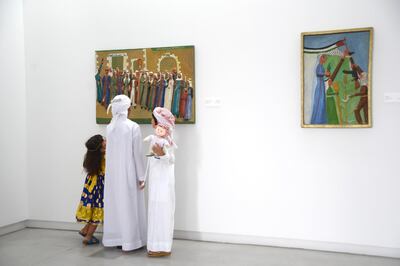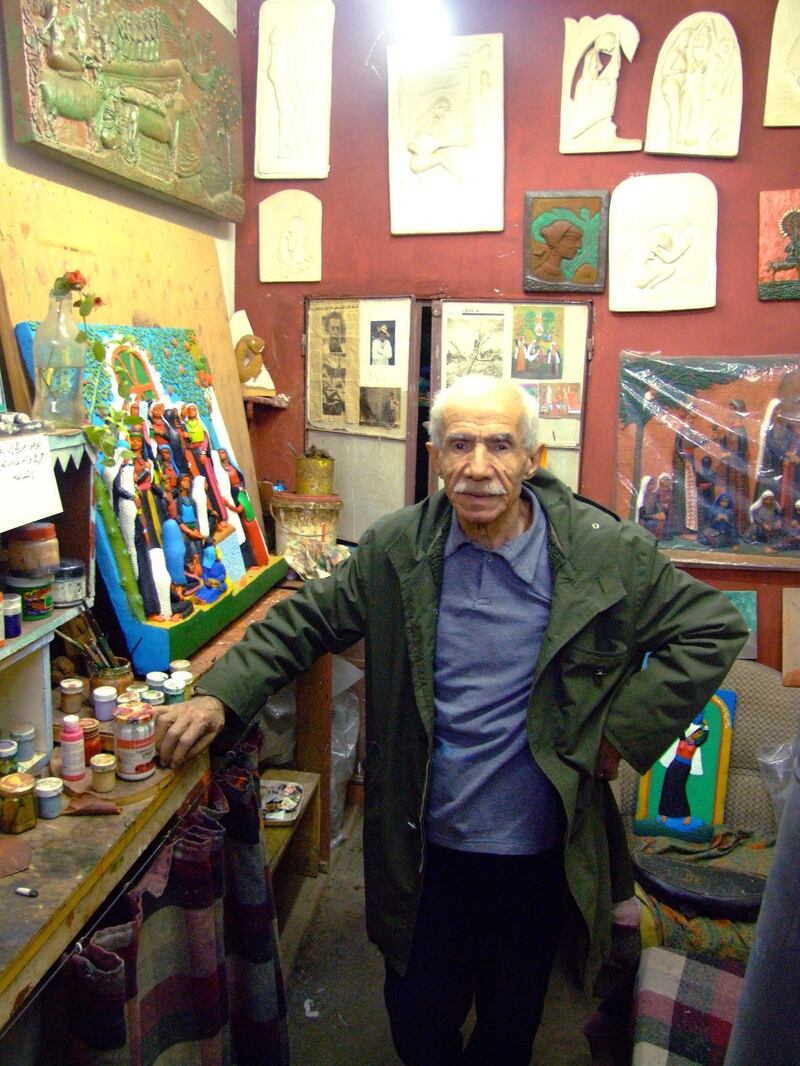One of the major artists of the first generation of Palestinian artists and activists, Abdul Hay Mosallam Zarara has died in Amman at the age of 87.
Zarara was born in the village of Al-Dawayima, near Al Khalil, now Hebron, and was forced to leave Palestine during the Nakba in 1948.
His work unflinchingly responded to the Palestinian tragedy, in acrylic reliefs that documented the suffering of the Palestinian people. He also created expressions of sympathy with other liberation struggles worldwide.
“Abdul Hay depicted what he witnessed: combat, exits or defeats, the casualties of assaults or massacres; solidarity, steadfastness, traditional village events, dialogues between a man and his abandoned ones,” says artist Ala Younis, who worked with him to document his art from 2002.
“He believed that, as he said, ‘a work of art is no less effective than a rifle’.”
Zarara’s reliefs were built of acrylic, glue and sawdust, and then brightly painted. He was entirely self taught, and his style was instantly recognisable.
Broadly speaking, his work can be divided into four main subjects: the Palestinian resistance, international liberation movements, Palestinian traditions, and a series dedicated to women in the different roles of freedom fighter, wife, mother and friend.
"One day, I saw the face of an old Palestinian woman on the cover of the magazine Palestine the Revolution; written beside it was the text, 'We will not forgive'," he recounted in an interview from 1983.
“I attempted to reproduce the old woman’s image with a paste of sawdust and glue, and it was through this experiment that I discovered the medium with which I would produce my works. Although this piece met only 20 per cent of my ambition for replicating the woman’s depiction, I continued forming similar figures on small pieces of wood until I met success.”

Zarara’s body of work has an archival role, as Younis points out. “His recollections seem to derive from particular events and images of the Palestinian cause or heritage. Yet they are comprised of the artist’s own memories of these events – of men and women who carry his resemblance, his icons of evil and peace, and his own handwriting of others’ words.”
In his work on Palestinian traditions, the figures wear thobes, with the square embroidery on the women's dresses and veils finely and brightly painted.
The reliefs depict typical Palestinian scenes, such as a line of men awaiting the breaking of the fast during Ramadan with bowls of food in front of them, or men and women greeting each other during festivities, with women carrying bright bundles on their heads and the men clutching prayer beads.
Other images show the violence that became a part of Palestinian life after the occupation, with fighters holding guns and fists aloft. His work, The Martyr Raja'a Abu Amasheh (1974) memorialises Raja'a Abu Amasheh, believed to be one of the first women to die for the Palestinian cause.
Pictured in an embroidered green dress, she waves a Palestinian flag above her head as blood drips down her face and keffiyeh scarf.

In a reminder of the mutual support and enthusiasm among solidarity movements of the 1970s and early 80s, Zarara also represented moments from contemporaneous civil rights struggles, such as the fight against Pinochet in Chile or against apartheid in South Africa. His Execution of the Poet Benjamin Moloise (1985) showed the martyred South African writer Benjamin Moloise hanging lifelessly as a bird with wings.
Zarara was an active member of the Palestine Liberation Organisation, which he joined in the late 1960s. He lived in Libya, Beirut, and Damascus, and from 1992, in Amman, where he stayed until his death.
His time in the resistance, like his memories of pre-Nakba Palestine, also furnished material for his work. For example, Exodus from Beirut to the Sea (1984) came out of his own experience at the PLO headquarters in Fakahani Street during the Siege of Beirut in 1982.
“When the PLO’s offices were being shelled during the siege, Abdul Hay and other artists moved as many artworks as they could in a van from the building that housed the Palestinian Union for Plastic Art to less-targeted locations,” explains Younis.
"In August 1982, the artist left with the militants and took his works onboard ships that brought fighters out of Beirut to Tunis. He depicts this trip in Exodus from Beirut to the Sea and adds to it excerpts of a poem by Mahmoud Darwish also written on board the ships."
His reliefs were well known in the region in the 1970s and 80s, when shows of work by Palestinian and PLO artists frequently travelled across the Middle East. He was included in group exhibitions across Libya, Syria, Lebanon and later in Jordan.
In 2011, he was given a retrospective at the Jordan National Gallery of Fine Arts, and two years later at the well-regarded contemporary art space Darat Al Funun.
His work was also shown in the West throughout his life, though a 2014 major exhibition at the Sharjah Art Foundation can be credited with introducing his reliefs to a wider global audience. His work is collected in the UAE by the Sharjah Art Foundation and the Barjeel Art Foundation.

His own dream was to have a museum dedicated to his work.
"I have never sought to exhibit in order to sell," he said in 1983. "My works are related to the Palestinian cause and I keep most of them. I dream of one day collecting my dispersed works related to the Palestinian cause in a small museum in which I can document them in my own way for future generations, and so that my identity can be learned about through touring nations around the world."







